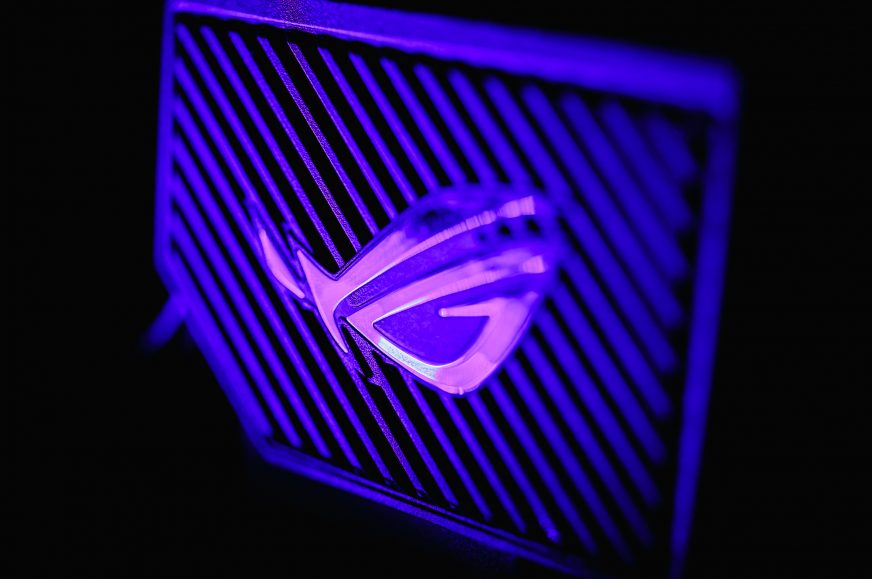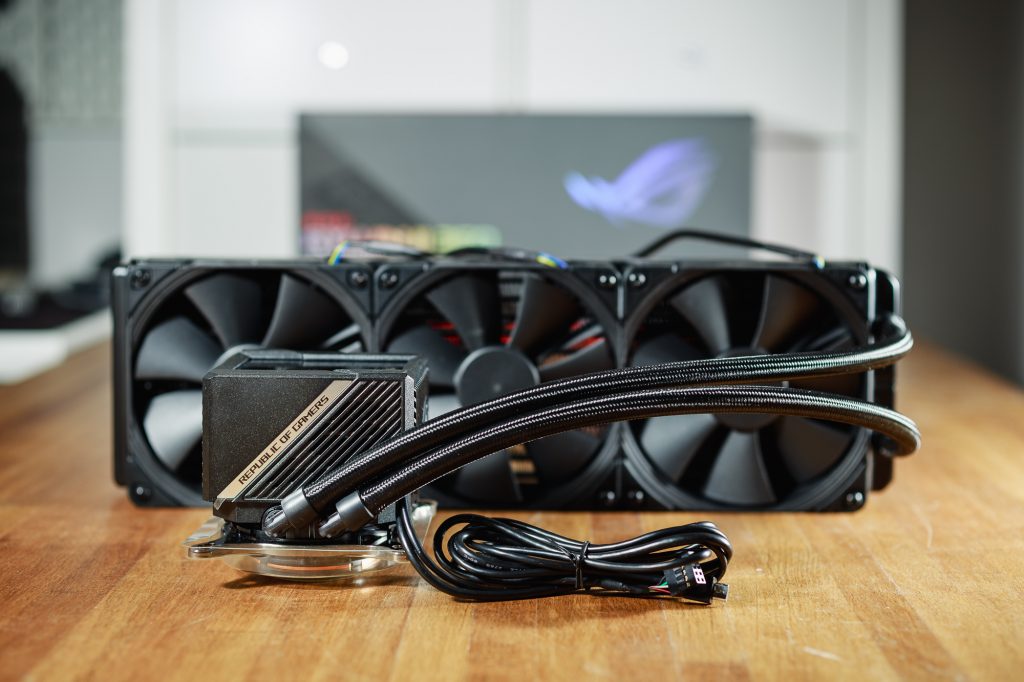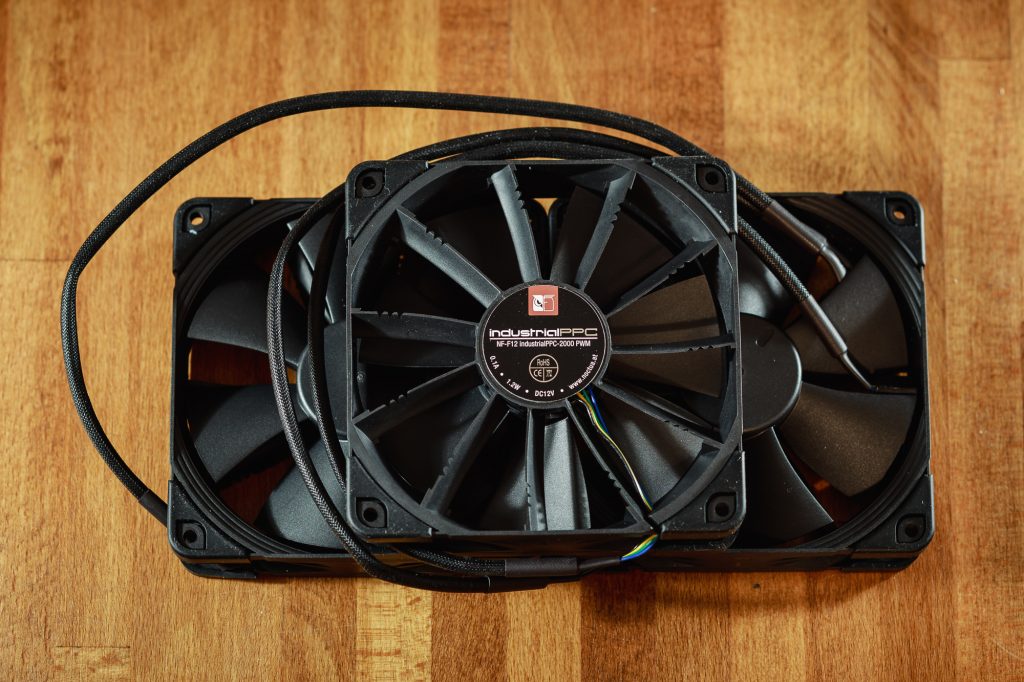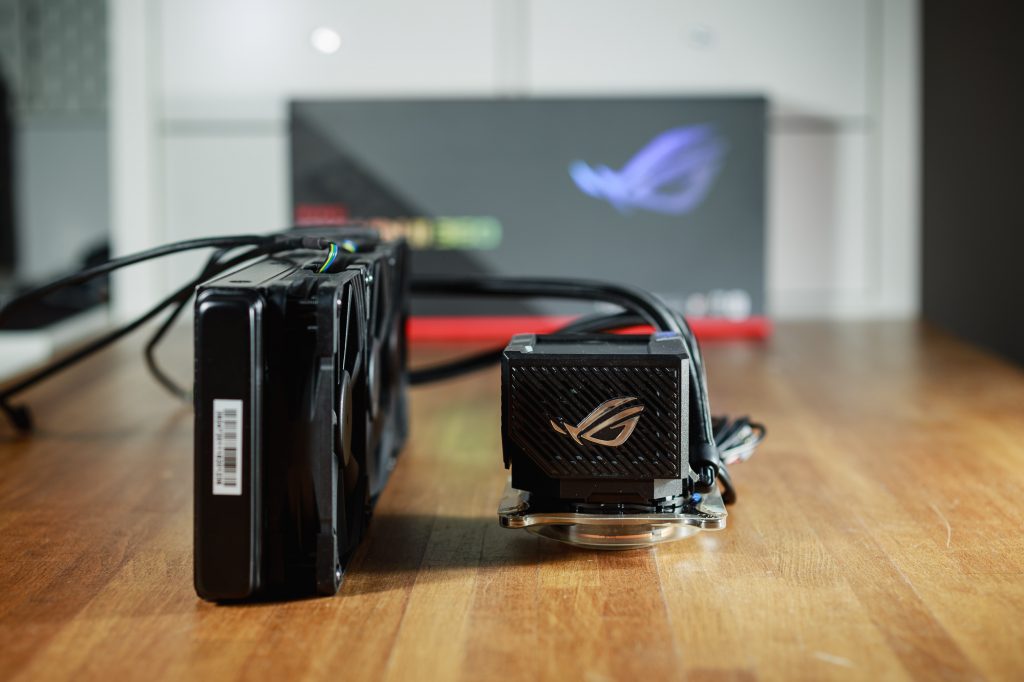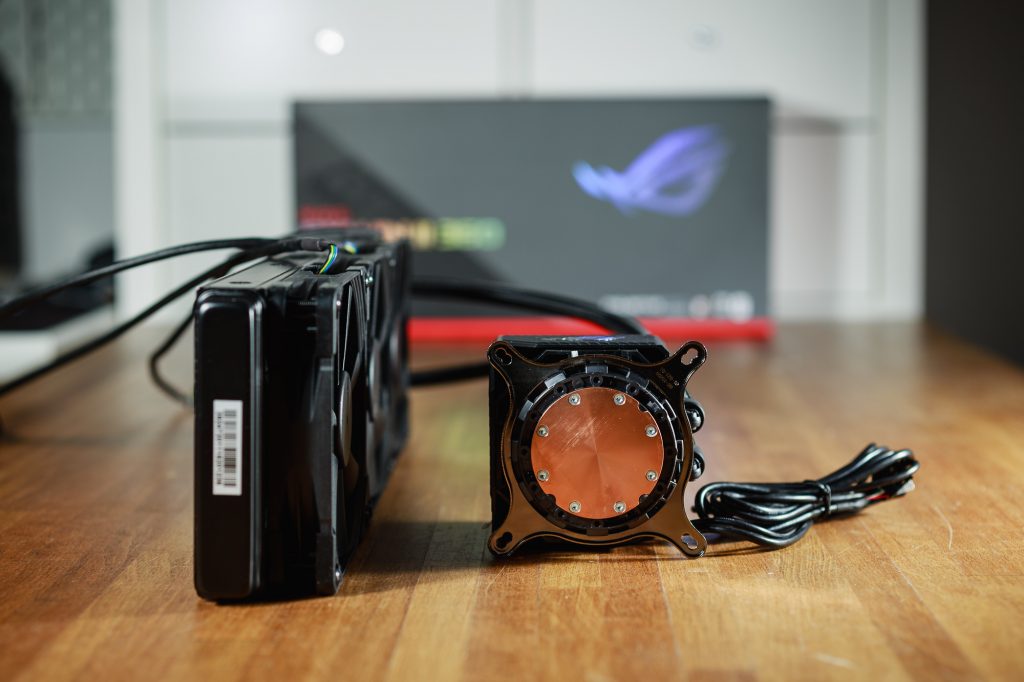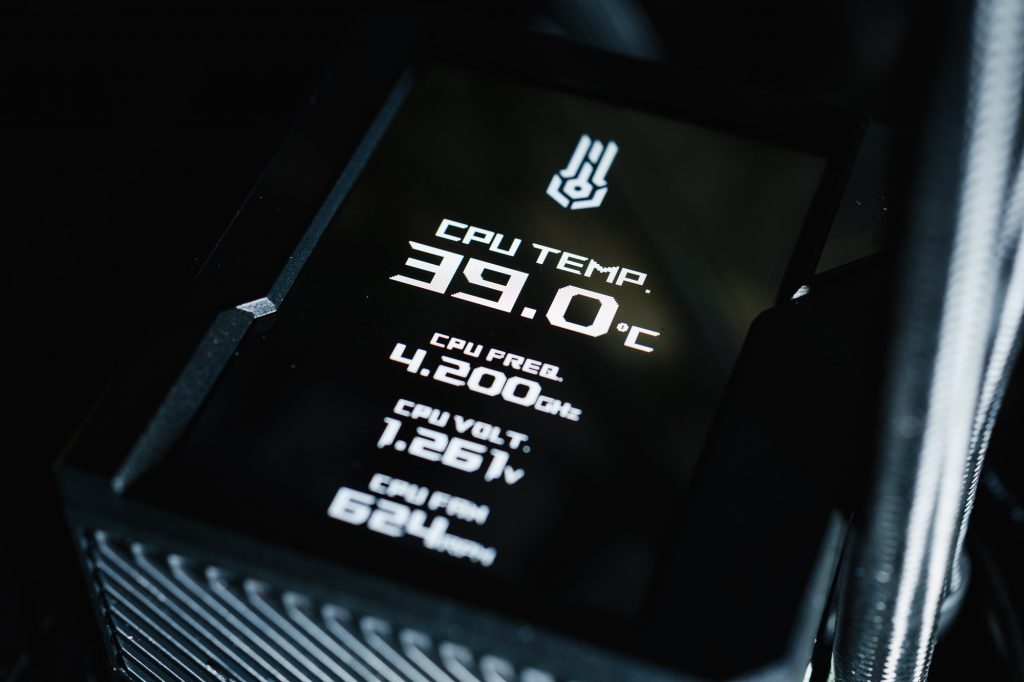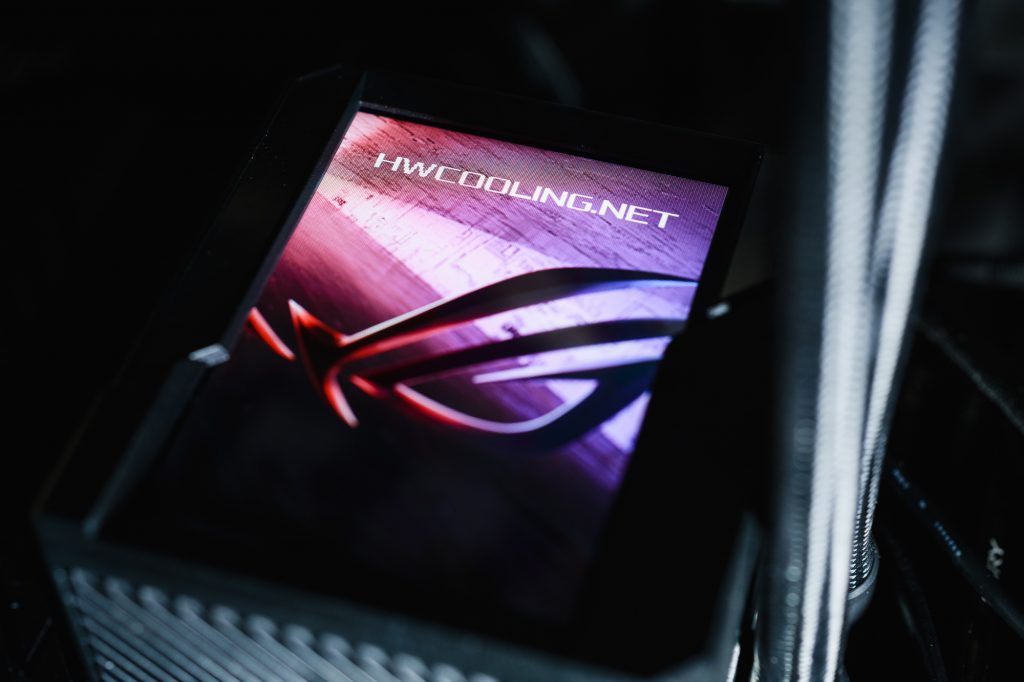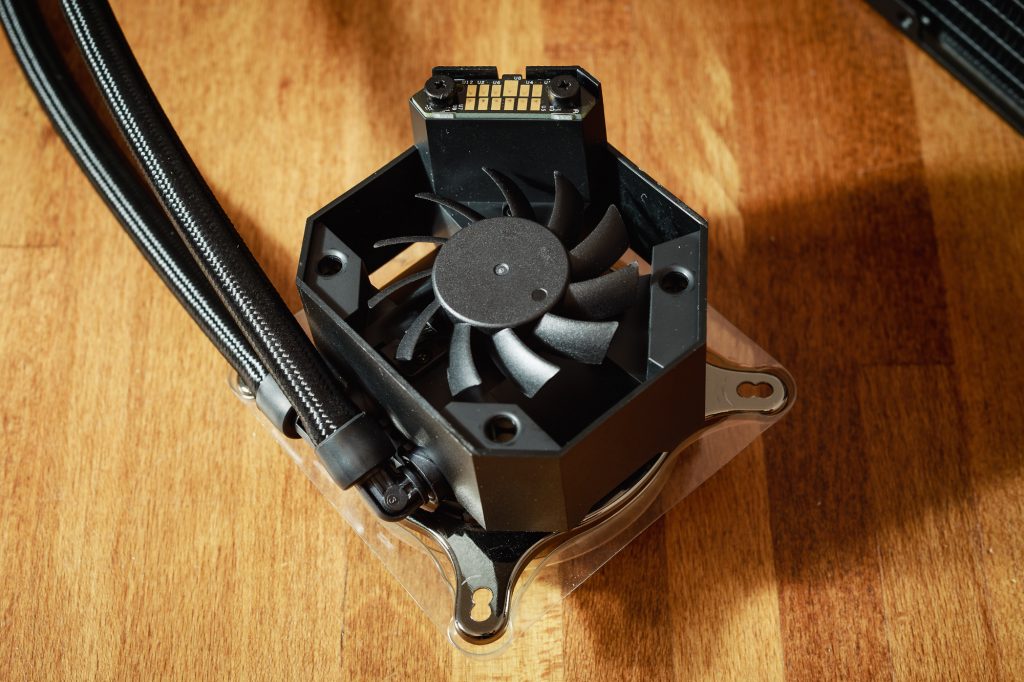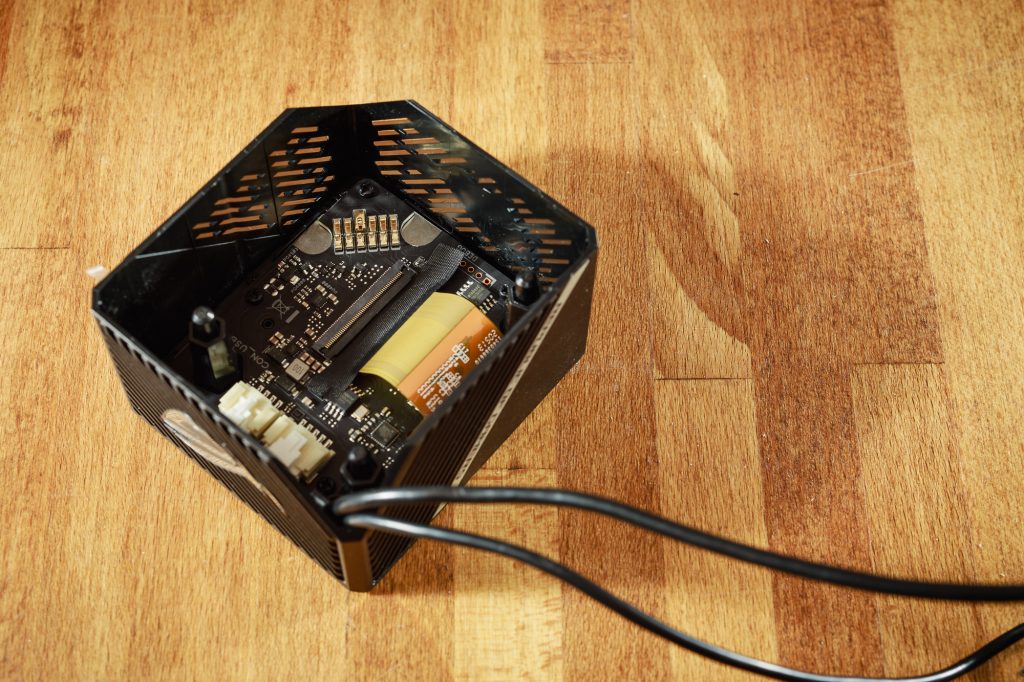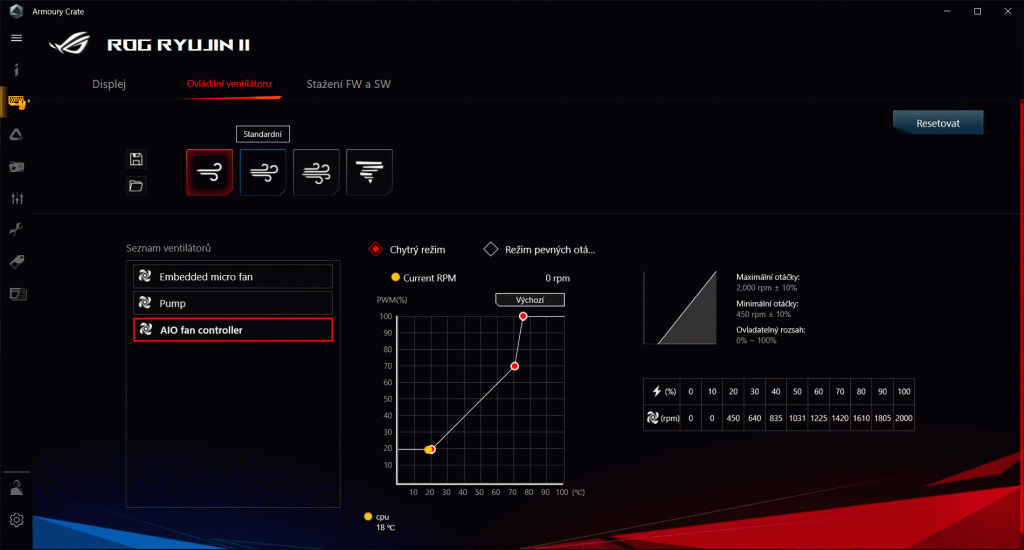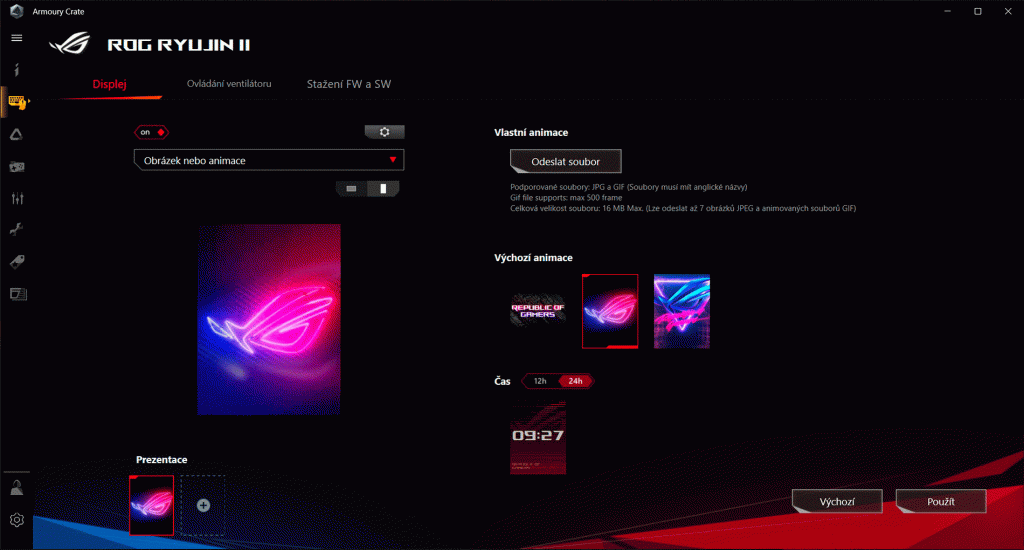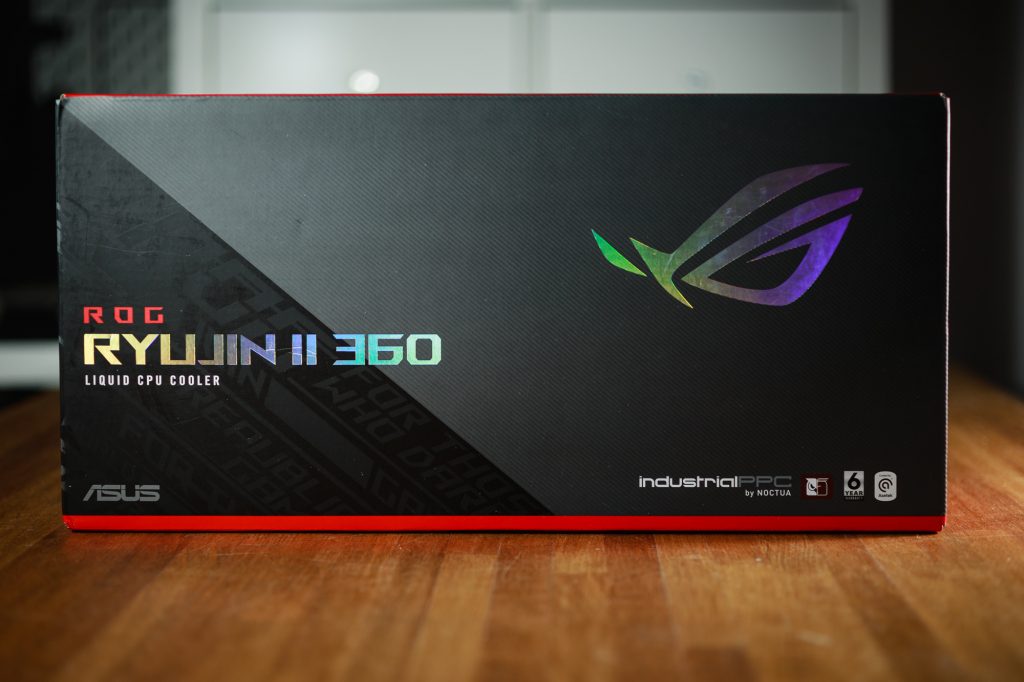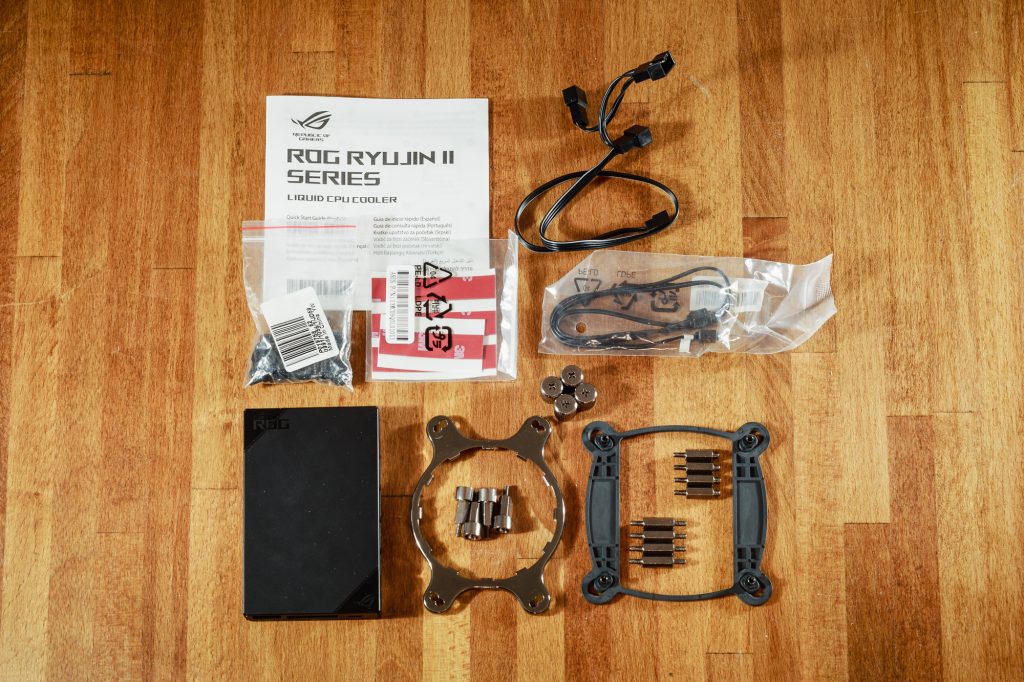Key Features
The Ryujin II 360 represents the pinnacle of Asus’ liquid AIO cooler range. This water cooler is based on the seventh generation of Asetek coolers. It boasts a trio of top-of-the-line Noctua NF-F12 Industrial PPC fans, and the ROG Fan Controller is also included. The premium components, however, come with a higher price tag. So I’m curious to see if the Ryujin II 360 can live up to it, or if it will fit in with the average of other AIO coolers.
Key features of the cooler
According to Japanese mythology, Ryujin is the deity of the seas and oceans, quite a fitting name for a water cooler. At the heart of this cooler is a seventh-generation Asetek pump that handles the circulation of liquid between the cooling block and the radiator.
The radiator is cooled by a trio of top-of-the-line 120mm Noctua fans from the Industrial PPC series. Since Noctua doesn’t offer any fans with ARGB backlighting, logically these don’t feature a single LED either. Instead, they are completely rendered in matte black. Additionally, they are more durable within the iPPC design both mechanically and against dust or moisture intrusion.
Unfortunately, the radiator itself is only aluminium. Its thickness of twenty-seven millimeters also does not break any records or the usual conventions among AIO coolers. ASUS missed an opportunity here to stand out from the crowd and add a copper radiator to the high-end fans, for example, in a deeper version for more efficient cooling of the circulating liquid in the circuit. The 380 millimetre long tubes that connect the cooling block to the radiator are braided for increased durability and a more attractive appearance. As is usual with most water coolers, they are connected to the cooling block by 90° swivel fittings. This design simplifies installation and routing of tubes inside the computer case.
The contact plate of the block is made of copper and a thin layer of thermal paste is applied to this surface from the factory. However, the test sample that I had on loan no longer had this layer, which is why you won’t find it in the photos. And again, I don’t understand why there is no tube with additional paste in the package if you wanted to move the cooler to another build. This means that the installation of the cooler needs to be done flawlessly on the first try.
One of the main highlights of the Ryujin II 360 is the 3.5″ LCD display on the top of the cooling block. Here you can display a variety of data about your build, enjoy a look at one of the animations on offer, or insert your own text or image.
An interesting feature is the integrated 60 mm fan, which is hidden above the pump in the cooling block. This fan is designed to provide active cooling around the CPU socket, where the power delivery or M.2 SSD slot is typically located. However, it is quite noisy at maximum speed. The electronic connection between the top cover and the display is handled by contact surfaces next to the fan. This connection not only provides power to the pump and fan, but also a data signal to the ROG Fan Controller and the motherboard via an internal USB 2.0 connector.
The Armoury Crate app makes it very easy to control the speed of the pump, the integrated fan in the block or the fans on the radiator. You can choose one of four preset profiles or create and save your own. You can also change the display orientation from horizontal to vertical depending on how you have the block installed on your CPU.
As I mentioned before, in addition to the mounting kits for installing the cooler on all current CPU sockets, the accessories also include a central hub in the form of the ROG Fan Controller. It can be used for fan speed control, but also for ARGB backlight synchronization. The controller has a magnetic back for mounting in a computer case. Or you can use the supplied double-sided adhesive tapes from 3M.
The installation of the cooler itself is quite quick and easy, it is a generic Asetek block that has been used for many years in many AIO coolers on the market. In the package you will of course also find a set of screws and washers for mounting the fans to the radiator, or for mounting the radiator to the computer case. Unfortunately though, you won’t find a tube of thermal paste here. I have rather conflicting feelings about this, as I have dealt with the same situation with several premium AIO coolers. So you only have a pre-applied layer on the base of the block, which is simply incomprehensible for a cooler with such a high price tag. Especially when one realizes that basic air coolers at a tenth of the price don’t suffer from this shortcoming.
Pump, radiator and fan parameters
For perspective, I compared the ROG Ryujin II to premium coolers from other manufacturers that I have also tested in the past. Like the MPG Coreliquid K360, the Ryujin II 360 also has a large pump block due to the presence of an LCD display. However, again, I strongly criticize the presence of an aluminum radiator in this price range. This is at least partially offset by the six-year warranty.
| Cooler | Asus ROG Ryujin II 360 | Fractal Design Celsius+ S36 Prisma | MSI MPG Coreliquid K360 | |
| Supported sockets | Intel 115x, 1200, 1700, 20xx; AMD AM4, TR4/sTRX4 | Intel 115x, 1200, 20xx; AMD AM4 | Intel 115x, 1200, 20xx; AMD AM4, TR4/sTRX4 | |
| Radiator dimensions (H × W × T) | 394 × 121 × 27 mm | 400 × 123 × 30 mm | 394 × 120 × 27 mm | |
| Block dimensions (H × W × T) | 88 × 81 × 78 mm | 86 × 75 × 45 mm | 97 × 83 × 94 mm | |
| Hose length | 380 mm | 400 mm | 400 mm | |
| Pump speed | 2800 rpm | 2800 rpm | 2800 rpm | |
| Radiator material | aluminum | aluminum | aluminum | |
| Max RAM height | no restrictions | no restrictions | no restrictions | |
| Warranty | 6 years | 5 years | 3 years | |
| Approx. retail price | Prodejní cena | € 285 | € 230 | € 255 |
The NF-F12 Industrial PPC fans supplied are some of the best on the market. These are industrial versions of the popular NF-F12 fans with a higher speed range and also with higher durability. The static pressure values are also very impressive for these fans. However, due to the relatively small thickness of the radiator, this does not bring much benefit. In fact, high static pressure values usually only make sense for thick radiators (typically above 40 mm). On the other hand, I fear that increasing the maximum speed will lead to unnecessarily higher noise levels without dramatically improving cooling efficiency. For commonly used radiators in AIO coolers, it is usually sufficient to use regular fans and rather focus on optimizing acoustic performance.
| Fan | Noctua NF-F12 iPPC PWM | Fractal Design Prisma AL-12 PWM ARGB | MSI Torx 4.0 | |
| Bearing | SSO2 | sleeve | double-row design | |
| Max speed | 2000 rpm | 2000 rpm | 2500 rpm | |
| Max static pressure | 3.94 mm H2O | 2.78 mm H2O | 4.29 mm H2O | |
| Max airflow | 121.8 m3/h | 145.6 m3/h | 131.5 m3/h |
- Contents
- Key Features
- Measurement methodology
- Results – 36 dBA
- Results – 39 dBA
- Results – 42 dBA
- Results - maximum speed
- Conclusion and rating





